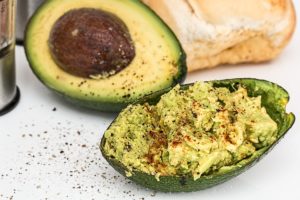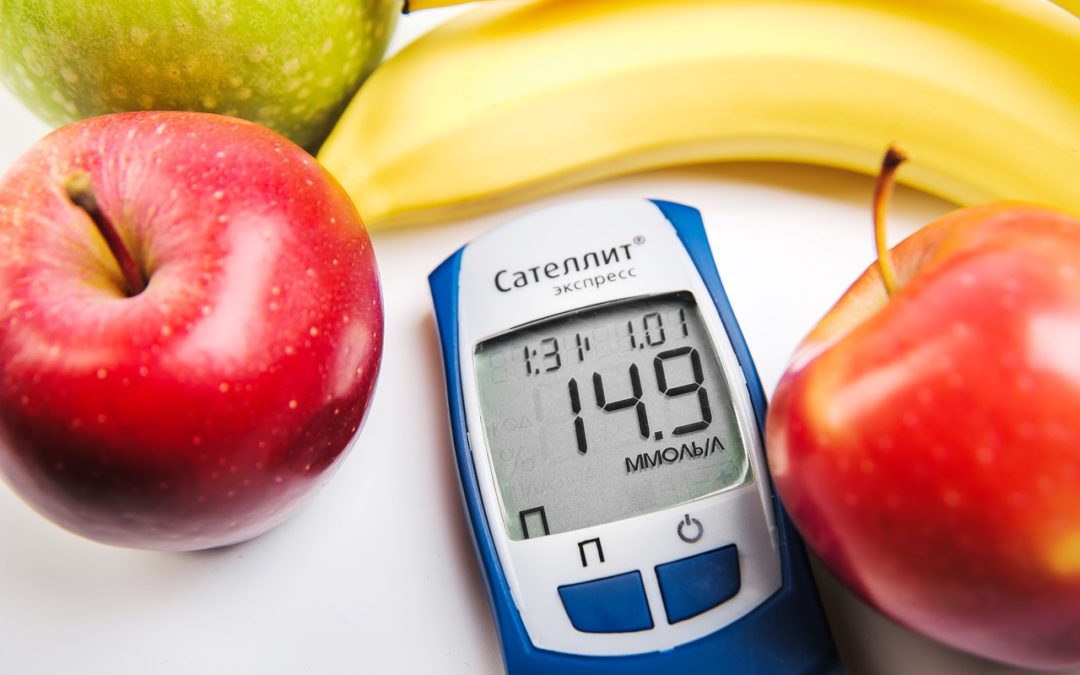Many chronic diseases such as type 2 diabetes; hypertension (high blood pressure); heart disease; age-related cognitive decline including dementia and Alzheimer’s disease; and cancers may be thought of as inevitable part of aging.
Although statistically, the prevalence of these chronic diseases increases with age, especially after age 40, numerous clinical research and studies have shown the strong influence of diets and lifestyle in the prevention and management of these diseases.
Let’s not be part of the statistics!
In Part 1 of this article series, we present a summary of what the latest research have shown in terms of the appropriate diets for the prevention and management of type 2 diabetes (T2D).
The identified risk factors and contributors are also presented.
Prevalence
According to the Centers for Disease Control and Prevention (CDC), diabetes is the 7th leading cause of death in the United States.1
There are more than 30 million Americans living with diabetes and 84 million (i.e., more than 1 in 3) living with prediabetes. Over the last 20 years, the prevalence of diagnosed diabetes has increased 3 folds.
Among the diagnosed cases of diabetes, 90% to 95% are T2D while 5% are type 1 diabetes mellitus (T1D).
Diabetes is the #1 cause of kidney failure, lower-limb amputations, and adult-onset blindness. T2D also increases the risk of heart disease and dementia/Alzheimer’s disease.1,2
Risk Factors and Contributors to T2D
The currently identified genetic predisposition or gene variants associated with T2D account for less than 10% of the overall individual risk of T2D.3 Therefore, our diets and lifestyle play a crucial role.
Insulin resistance (IR) was found to be a major cause of T2D disease process (or pathogenesis).2
Insulin is the hormone secreted by the pancreas. Insulin is secreted when blood sugar levels rise, typically after a meal. Insulin stimulates uptake of blood glucose by cells in our body for energy metabolism and storage. Insulin also stimulates the liver to suppress glucose production.
IR is a condition where cells and/or liver become non-responsive to the stimulation by insulin, thus resulting in elevated blood glucose levels. Both postprandial (after a meal) and fasting blood glucose levels may be elevated.
Chronic IR can lead to dysfunction of the pancreatic β-cell responsible for the secretion of insulin. Impaired insulin secretion further elevates blood glucose levels, thus forming a vicious cycle.4
Several risk factors and contributors to IR include:2,5–7
- Obesity and excess abdominal fat, and lack of exercise, which are the major contributors to IR.
- Chronic inflammation.
- Gut flora imbalance or dysbiosis that affect glucose absorption and metabolism and energy storage.
- Excessive dietary intake of saturated fats and trans fats, which promote inflammation, oxidative stress, dysbiosis, leaky gut and dysregulation of lipid metabolism.
Obesity and fat tissues in the abdomen contribute to chronic low-grade inflammation. Chronic inflammation in turns can contribute to dysregulation of lipid metabolism and promote fat storage. IR and the resultant high insulin levels also promote fat storage.
Therefore, obesity, more specifically excess abdominal fat, chronic inflammation and IR form a complex vicious cycle.
Beneficial Diets and Nutrition for T2D
In general, the traditional Mediterranean diet, vegetarian and vegan diets are the most widely studied dietary patterns in large number of clinical studies including clinical trials in terms of their effects on various diseases.
Dietary Patterns Studied in Clinical Research
Some of the main dietary patterns studied for T2D include:8–18
- The traditional Mediterranean diet
- Vegetarian or vegan diets
- Low carbohydrate diets including ketogenic diets
- Calorie-restricted diets
- Diets rich in complex carbohydrates versus refined carbohydrates
The traditional Mediterranean diet studied was rich in low glycemic index (GI) complex carbohydrates (i.e. 50-55% of total calories) including whole fruits, vegetables, legumes, and whole grains; rich in monounsaturated fatty acids (MUFAs) (i.e. 30% of total calories); and limited amount of protein (i.e., 15-20% of total calories) from red meat, poultry, fish, dairy and red wine.
Vegan or vegetarian diets studied were rich in low GI and high fiber complex carbohydrates, i.e., 70-75% of total calories from carbohydrate, 12-15% from protein, and 10-18% from fats, primarily from MUFAs and polyunsaturated fatty acids (PUFAs).
Low carbohydrate diets typically maintain 30% or lower caloric proportion of carbohydrates. Ketogenic diets reduce the carbohydrate proportion to less than 5%, while having a high proportion of fats including saturated fats and moderate proportion of protein.
Some studies also evaluated the effects of prebiotic and probiotic supplementation.
Highlights of Clinical Research Findings8–18
The traditional Mediterranean diet, and vegan or vegetarian diets described above were found to be most beneficial for reducing the risk, managing the progression and potentially reversing T2D.
Such diets were found to mitigate IR and pancreatic β-cell dysfunction through reduced fat storage, anti-inflammatory and anti-oxidant properties, improved composition of gut microbiota, and low glycemic impact.
An important emphasis of these diets is on consuming whole foods instead of processed or refined foods.
The beneficial dietary composition consists of:
- Moderate-to-high percentage (50-75%) of complex carbohydrates rich in dietary fiber, prebiotics, and resistant starch, and low in GI.

- Low-to-moderate percentage (10-30%) of unsaturated fats primarily of MUFAs (e.g., omega-9 fatty acids and oleic acid, found in olive oil, avocado) and PUFAs, especially omega-3 fatty acids (e.g. cold-water fish, flaxseed and nuts).
- Low-to-moderate percentage (12-20%) of proteins

The type of carbohydrates consumed is more important than the exact amount of carbohydrates. Complex carbohydrates from whole fruits, vegetables, legumes and whole grains which are rich in phytonutrients, dietary fiber, prebiotics, and resistant starch, and low in GI should be emphasized. Refined carbohydrates should be avoided.
No beneficial effects were observed for calorie restricted diets.
Meat consumption, especially red meat and processed meat was found to increase the risk of T2D. Research findings include:
- Saturated fats, trans fats, heme iron, and advanced glycation end products found in these meat products were implicated in promoting oxidative stress and inflammation.
- For each 100 g/day of red meat consumed, the risk of T2D was found to increase by 15%.
- For each 50 g/day of processed meat consumed, the risk of T2D increased by 32%.
The number of clinical studies on ketogenic diets is limited. The current limited number of studies revealed some beneficial effects of ketogenic diets.
Limited clinical studies on the use of prebiotic and probiotic supplementation have also shown their benefits in the management of T2D.
Related Articles
Diets and Chronic Disease (Part 2: High Blood Pressure)
Diets and Chronic Disease (Part 3: Heart Disease)
Diets and Chronic Disease (Part 4: Alzheimer’s Disease)
References
- Centers for Disease Control and Prevention. About diabetes. Cdc.gov. https://www.cdc.gov/diabetes/basics/diabetes.html. Published 2018.
- Altaf Q, Barnett A, Tahrani A. Novel therapeutics for type 2 diabetes: insulin resistance. Diabetes, Obesity and Metabolism. 2014;17(4):319-334. doi:10.1111/dom.12400
- Rathmann W, Scheidt-Nave C, Roden M, Herder C. Type 2 Diabetes. Deutsches Aerzteblatt Online. 2013. doi:10.3238/arztebl.2013.0331
- Remedi M, Emfinger C. Pancreatic β-cell identity in diabetes. Diabetes, Obesity and Metabolism. 2016;18:110-116. doi:10.1111/dom.12727
- Esser N, Legrand-Poels S, Piette J, Scheen A, Paquot N. Inflammation as a link between obesity, metabolic syndrome and type 2 diabetes. Diabetes Res Clin Pract. 2014;105(2):141-150. doi:10.1016/j.diabres.2014.04.006
- Lau E, Carvalho D, Pina-Vaz C, Barbosa J, Freitas P. Beyond gut microbiota: understanding obesity and type 2 diabetes. Hormones. 2015. doi:10.14310/horm.2002.1571
- Samuel V, Shulman G. Mechanisms for Insulin Resistance: Common Threads and Missing Links. Cell. 2012;148(5):852-871. doi:10.1016/j.cell.2012.02.017
- Khazrai Y, Defeudis G, Pozzilli P. Effect of diet on type 2 diabetes mellitus: a review. Diabetes Metab Res Rev. 2014;30(S1):24-33. doi:10.1002/dmrr.2515
- Paoli A, Rubini A, Volek J, Grimaldi K. Erratum: Beyond weight loss: a review of the therapeutic uses of very-low-carbohydrate (ketogenic) diets. Eur J Clin Nutr. 2014;68(5):641-641. doi:10.1038/ejcn.2014.47
- Esposito K, Maiorino M, Bellastella G, Chiodini P, Panagiotakos D, Giugliano D. A journey into a Mediterranean diet and type 2 diabetes: a systematic review with meta-analyses. BMJ Open. 2015;5(8):e008222. doi:10.1136/bmjopen-2015-008222
- Yokoyama Y, Barnard N D, Levin S M, Watanabe M. Vegetarian diets and glycemic control in diabetes: a systematic review and meta-analysis. Cardiovascular Diagnosis and Therapy. 2014;4(5):373–382. Doi:10.3978/j.issn.2223-3652.2014.10.04
- Fallucca F. Gut microbiota and Ma-Pi 2 macrobiotic diet in the treatment of type 2 diabetes. World J Diabetes. 2015;6(3):403. doi:10.4239/wjd.v6.i3.403
- Maki K, Phillips A. Dietary Substitutions for Refined Carbohydrate That Show Promise for Reducing Risk of Type 2 Diabetes in Men and Women. J Nutr. 2014;145(1):159S-163S. doi:10.3945/jn.114.195149
- Mari-Sanchis A, Gea A, Basterra-Gortari F, Martinez-Gonzalez M, Beunza J, Bes-Rastrollo M. Meat Consumption and Risk of Developing Type 2 Diabetes in the SUN Project: A Highly Educated Middle-Class Population. PLoS ONE. 2016;11(7):e0157990. doi:10.1371/journal.pone.0157990
- Feskens E, Sluik D, van Woudenbergh G. Meat Consumption, Diabetes, and Its Complications. Curr Diab Rep. 2013;13(2):298-306. doi:10.1007/s11892-013-0365-0
- Schellenberg E, Dryden D, Vandermeer B, Ha C, Korownyk C. Lifestyle Interventions for Patients With and at Risk for Type 2 Diabetes. Ann Intern Med. 2013;159(8):543. doi:10.7326/0003-4819-159-8-201310150-00007
- Kahleova H, Pelikanova T. Vegetarian Diets in the Prevention and Treatment of Type 2 Diabetes. J Am Coll Nutr. 2015;34(5):448-458. doi:10.1080/07315724.2014.976890
- Han J, Lin H. Intestinal microbiota and type 2 diabetes: From mechanism insights to therapeutic perspective. World J Gastroenterol. 2014;20(47):17737-17745. doi:10.3748/wjg.v20.i47.17737

